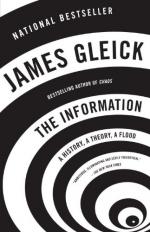
|
| Name: _________________________ | Period: ___________________ |
This test consists of 5 multiple choice questions, 5 short answer questions, and 10 short essay questions.
Multiple Choice Questions
1. What did a young mathematician named Kurt Gödel conclude about conflicting statements?
(a) There frequency represented only a .001 percent possibility of occurring.
(b) There were some statements that could neither be proved or disproved.
(c) That the Principia Mathematica was flawed and began his own work.
(d) That Russell had made an error in basic structure of the Principia Mathematica.
2. What language do the drums of what is now Zaire mimic?
(a) Bantu.
(b) Swahili
(c) Kele.
(d) Zulu.
3. What word book by James Murray was first published in 1879?
(a) The Birth of Writing.
(b) Oxford English Dictionary.
(c) The First Language.
(d) A Table Alphabeticall.
4. How was the machine created by Charles Babbage received?
(a) It received government backing but was not considered practical.
(b) It was very well received in academia.
(c) It failed to receive governmental backing.
(d) It was very well received in the mathematics community.
5. While working on plans for this "analytical engine," Babbage struck an acquaintance with what individual?
(a) Isaac Newton.
(b) Ada Lovelace.
(c) Lord Byron.
(d) John Simpson.
Short Answer Questions
1. What was the Morse code based on?
2. Who first defined the concept of "bandwith"?
3. What caused the errors that were contained in the tables of logarithms that had to be calculated themselves?
4. By 1930, what had replaced the telegraph as the most advanced means of communication?
5. What did Alan Turing reduce human thought to?
Short Essay Questions
1. What advanced form of communication was beginning to emerge in the 1840s?
2. What technological breakthrough resulted from Claude Shannon's theories and work?
3. Why did Ada Lovelace publish her mathematical arguments anonymously?
4. What were the two stages of a "bit" as conceived by Claude Shannon?
5. What impact did the electric telegraph have on the world?
6. While Shannon worked on secret cryptography projects for the US government during World War II, what theory about information did he conceive?
7. In modern times, what innovation has had the most impact on language?
8. By reducing information to its elemental form, Claude Shannon opened up a new field of scientific inquiry that proved to have applications not only in communications, but in what other fields?
9. Who first conceived the idea of a machine that could think and under what circumstances?
10. Who was Claude Shannon?
|
This section contains 765 words (approx. 3 pages at 300 words per page) |

|




